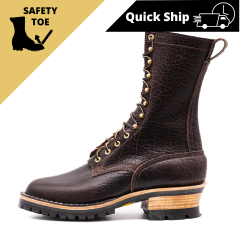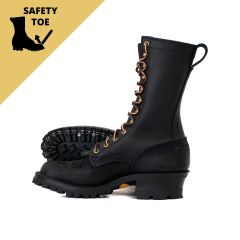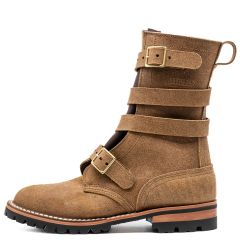When it comes to choosing the right footwear for tough jobs, steel-toe boots are unparalleled in providing safety, durability, and comfort. Designed to safeguard your feet from heavy falling objects and compression, these boots are a staple for anyone working in hazardous environments, including some of the most dedicated professionals such as firefighters and construction workers.
All About Steel Toe Boots
Steel toe boots are a kind of personal protective equipment (PPE) featuring a durable steel cap in the toe box area to shield feet from impacts and compressive forces. These sturdy boots are essential in various hazardous work environments, providing a front line of defense for the delicate bones in the feet.
Unlike regular footwear, steel-toe boots are designed to comply with specific safety standards, such as the American Society for Testing and Materials (ASTM) guidelines. We offer a selection of ASTM-approved steel-toe boots, ensuring that workers have the necessary protection without compromising on comfort or craftsmanship.
History And Evolution Of Steel Toe Boots
The inception of steel toe boots dates back to the early 20th century, intended for protecting workers in industrial facilities. Through the decades, these boots have undergone innovation to meet increasing safety regulations and adapt to various work scenarios. Initially bulky and uncomfortable, modern technology has allowed the steel toe boots to evolve into forms that emphasize ergonomic design without neglecting safety.
Importance Of Steel Toe Boots In Workplace Safety
Steel toe boots are a fundamental component of workplace safety, significantly reducing the risk of foot injuries in environments with potential hazards like falling, rolling objects, or electrical threats. As mandated by OSHA regulations, these boots are often compulsory for jobs demanding high levels of foot protection to mitigate accidents.
Wearing steel-toe boots is an employer's and employee's shared responsibility, contributing to a safer workplace. At Nicks Boots we believe in safeguarding customers, and that's why their Steel Toe Contender boots are built to meet and exceed industry safety standards. This commitment transcends mere compliance, embodying the importance of protection in every product they offer.
Types Of Steel Toe Boots
BuilderPro™ Safety Toe Classic Configuration
The BuilderPro™ Safety Toe (Steel and Composite) Boot, crafted in the classic configuration with a standard lead time, stands out with its moderate water resistance, making it suitable for various work environments. Offering stiffer yet supportive flexibility, this boot is designed for both daily wear and demanding work conditions.
While not NFPA certified, it complies with ASTM F2413-18 M/I/C standards, ensuring quality and safety. Featuring a 55 Classic Arch Standard Toe last and a height of 10 inches, it guarantees durability and protection. The boot's steel ASTM toe structure ensures robustness, while the sole stitching thread made of Fire-Resistant, Self-Extinguishing Technora® underscores its safety measures. With a Logger heel profile, this boot is rebuildable and resole-able, ensuring extended use and adaptability for diverse tasks.
Safety is non-negotiable. Ensure your feet are Nicks Boots protected with our steel toe collection.
BuilderPro™ Safety Toe -55 Classic Arch
The BuilderPro™ Safety Toe -55 Classic Arch boot offers moderate water resistance and a stiffer, more supportive structure, making it suitable for both everyday wear and work environments. While not NFPA certified, it adheres to ASTM F2413-18 M/I/C ratings, ensuring compliance with safety standards. It doesn't carry an EH (Electrical Hazard) rating and lacks a specific toe style, while the outsole features a V100 Lug for enhanced traction.
With a logger heel profile, this rebuildable and resole-able boot offers durability and potential for long-term use, making it a reliable choice for various tasks and activities.
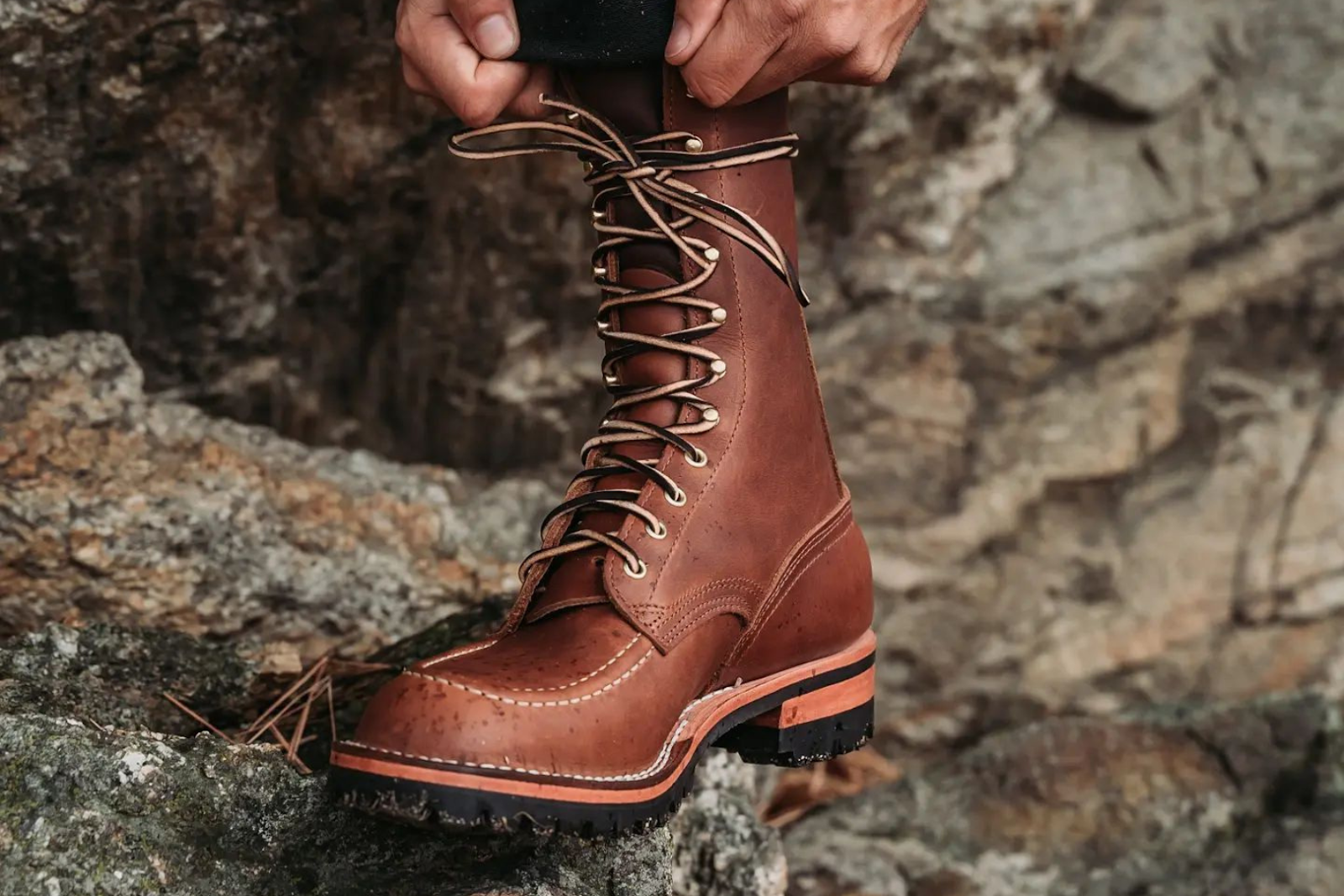

BuilderPro™ Safety Toe -HNW Moderate Arch
The BuilderPro™ Safety Toe -HNW Moderate Arch boot exhibits moderate water resistance, offering stiffer yet highly supportive flexibility suitable for daily wear and work environments. While it lacks NFPA certification and EH (Electrical Hazard) rating, it adheres to ASTM F2413-18 standards for impact and compression (M/I/C rated).
The design showcases a standard toe in accordance with the HNW Moderate Arch Last, featuring a V100 Lug outsole, a block heel profile, and standard sole stitching thread. Notably, this boot is rebuildable and resole-able, ensuring prolonged usage and potential restoration for long-term durability and performance.
Advantages Of Steel Toe Boots In Various Industries
Construction Industry
Steel toe boots play a pivotal role in the construction sector by mitigating risks associated with falling tools and materials while providing stability on uneven surfaces. Recognizing these challenges, we specialize in crafting boots that blend steel toe protection with supple yet durable leather, ensuring that workers remain both safe and comfortable in demanding construction environments.
Manufacturing Sector
Within manufacturing facilities, the risk of injuries from heavy machinery and falling objects is a constant concern. Our steel toe options not only protect workers from such hazards but also feature durable soles that help prevent slips and falls—a crucial safety feature tailored specifically for the dynamic environment of manufacturing plants.
Logistics And Warehousing
In logistics and warehousing, frequent handling of goods exposes workers to potential foot injuries. Our steel toe designs offer protection against heavy items while ensuring the necessary cushioning to support long hours spent on one's feet. This combination of safety and comfort is particularly valuable in these industries.
Emergency Services
In unpredictable scenarios faced by first responders and emergency service personnel, the importance of steel toe boots for foot protection cannot be overstated. The Nicks Boots' Firefighter Series is meticulously designed to meet the rigorous demands of these life-saving roles, providing both durability and reliability in challenging environments.
Agriculture And Forestry
The agricultural and forestry sectors pose unique challenges, including rugged terrain and exposure to machinery and heavy loads. Steel toe protection in these boots is paramount in ensuring foot safety amidst such demanding environments.
Maintenance And Care Tips For Steel Toe Boots
Regular Cleaning For Maintenance
Initiating proper maintenance begins with regular cleaning to eliminate accumulated dirt and debris, crucial for preserving the quality of Nicks Boots' steel-toe products. Utilizing gentle cleaners and conditioners is highly recommended to effectively cleanse the boots while extending their lifespan and retaining their protective qualities.
Proper Storage Practices
Ensuring the longevity of steel-toe boots involves storing them in optimal conditions when not in use. It’s best to store the boots in a cool and dry place to prevent mildew formation and potential damage to the leather. Avoiding direct sunlight exposure or damp environments is crucial, which could hasten deterioration.
Leather Conditioning Techniques
Conducting proper leather conditioning is imperative to prevent cracks and maintain the durability of steel toe boots. We offer specially formulated conditioning products designed to keep the leather supple, thereby enhancing the boots' durability and ensuring continued comfort during wear.
How To Choose The Right Size And Fit For Steel Toe Boots?
Understanding Lasts And Sizing
The selection of the appropriate last, or shoe mold, significantly impacts the comfort and fit of boots. This approach ensures that customers can find the ideal fit that complements their feet and aligns with their specific job demands.
Considering Work Environment
When opting for steel-toe boots, it's essential to consider the unique requirements of the work environment. Nicks Boots provides a wide array of steel toe options, empowering workers to select boots that best match their job demands while prioritizing both safety and comfort. This comprehensive selection ensures that individuals can find boots tailored to their specific work environments without compromising on either aspect.
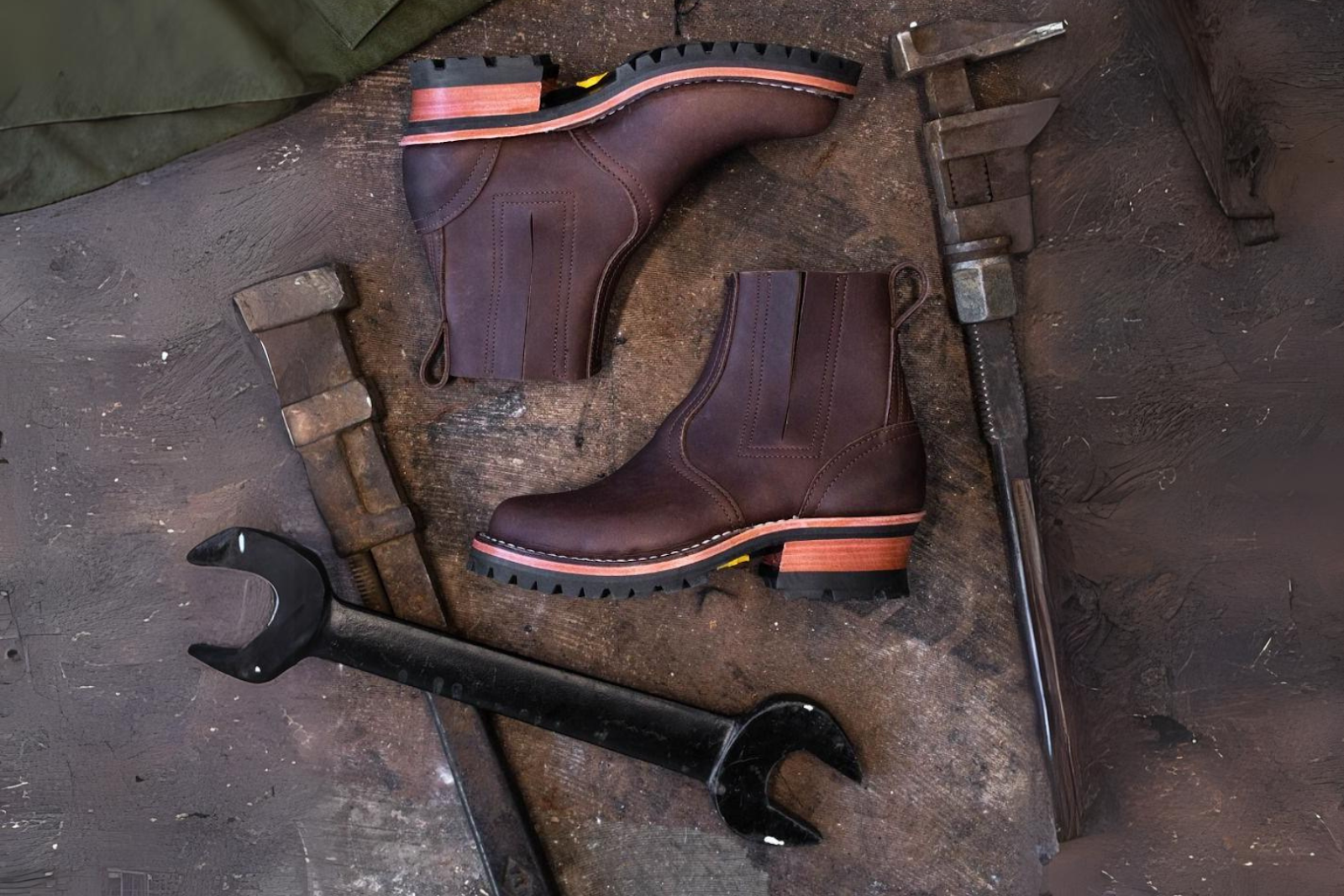

Final Thoughts On Steel Toe Boots
Steel toe boots are not just another item of protective gear; they are a critical investment in the safety of hardworking men and women across industries. With the proper care, a quality pair of steel-toe boots can provide years of support and protection.
At Nicks Boots we remain dedicated to upholding the tradition of handmade boot craftsmanship, believing everyone deserves a boot that's as resilient as they are. Whether on a construction site, in a warehouse, or out in the wild, a pair of our steel-toe boots is a pledge to safety, performance, and enduring quality.
Frequently Asked Questions About Steel Toe Boots
What is the difference between steel toe and composite toe boots?
Steel toe boots have a protective cap made of steel, offering robust protection against heavy impacts. Composite toe boots use non-metal materials like Kevlar, carbon fiber, or plastic, providing similar protection but are lighter and non-conductive.
How much weight can steel-toe boots withstand?
Steel toe boots can withstand varying weights depending on standards. Typically, they are tested to endure impacts of at least 75 pounds dropped from a specific height.
Are steel-toe boots slip-resistant?
Many steel-toe boots come with slip-resistant soles, offering improved traction on slippery surfaces, but this feature may vary based on the boot's design and manufacturer.
Do steel-toe boots protect against electrical hazards?
Steel toe boots can conduct electricity, posing a risk in electrical environments. Therefore, for protection against electrical hazards, it's advisable to choose boots with electrical hazard (EH) ratings or opt for non-conductive footwear like composite toe boots.
What are the safety ratings for steel-toe boots?
Steel toe boots might meet various safety standards like ASTM (American Society for Testing and Materials) or ANSI (American National Standards Institute) for impact resistance and compression.
How often should I replace my steel-toe boots?
The lifespan of steel-toe boots depends on usage, wear and tear, and adherence to safety standards. Generally, it's recommended to replace them every 12-18 months or sooner if significant damage or reduced protection is noticed.
What are the best socks to wear with steel-toe boots?
Consider moisture-wicking socks made of materials like merino wool or synthetic blends to keep your feet dry and cushioned while wearing steel-toe boots.
How can I break in new steel-toe boots?
Gradually break in new steel-toe boots by wearing them for short periods initially, using protective blister pads if needed, and gradually increasing wear time to allow the boots to conform to your feet's shape.
Do steel-toe boots cause foot problems?
Improperly fitted steel-toe boots or prolonged wear without breaks may cause foot problems like blisters, calluses, or discomfort. Ensuring proper fit and taking breaks can help prevent issues.
How can I prevent foot pain from wearing steel-toe boots?
To prevent foot pain, ensure proper sizing, use cushioned insoles for added comfort, take regular breaks, and use foot-stretching exercises to alleviate pressure on the feet.
